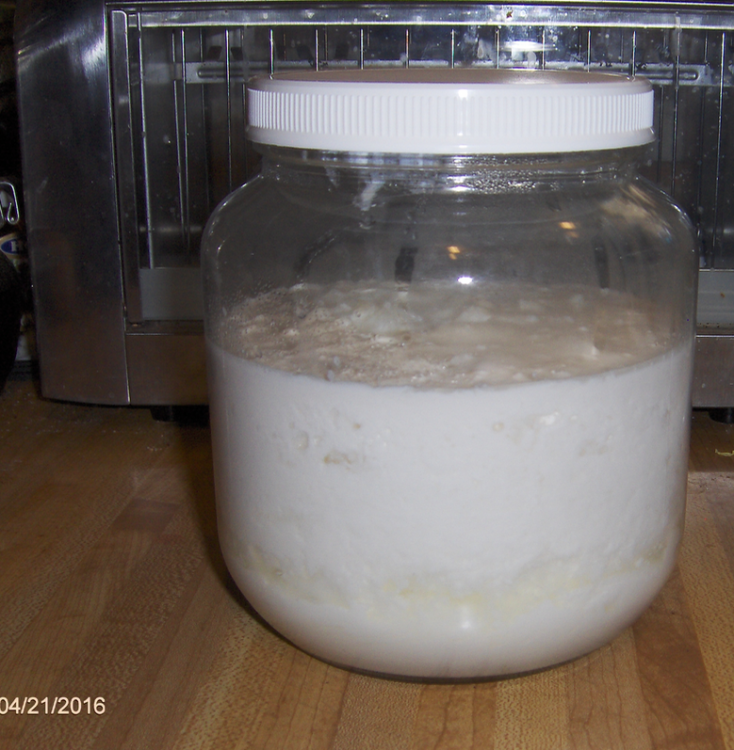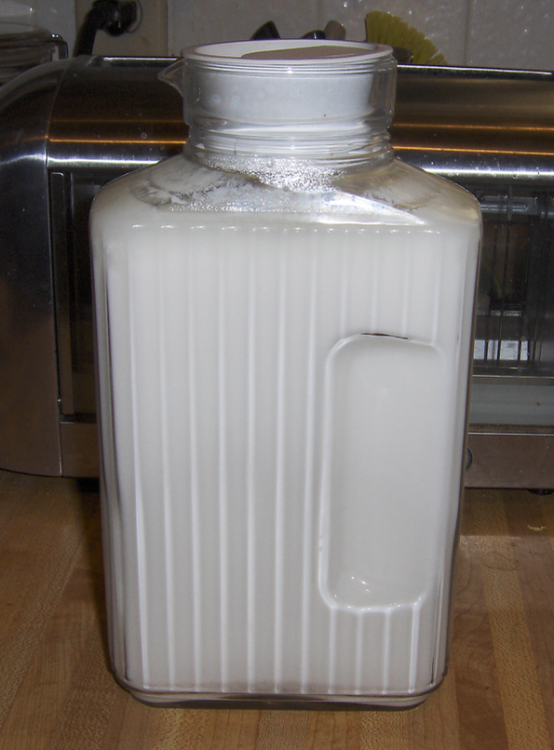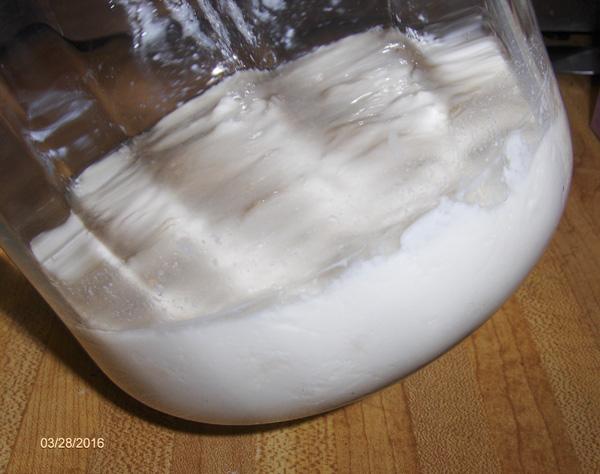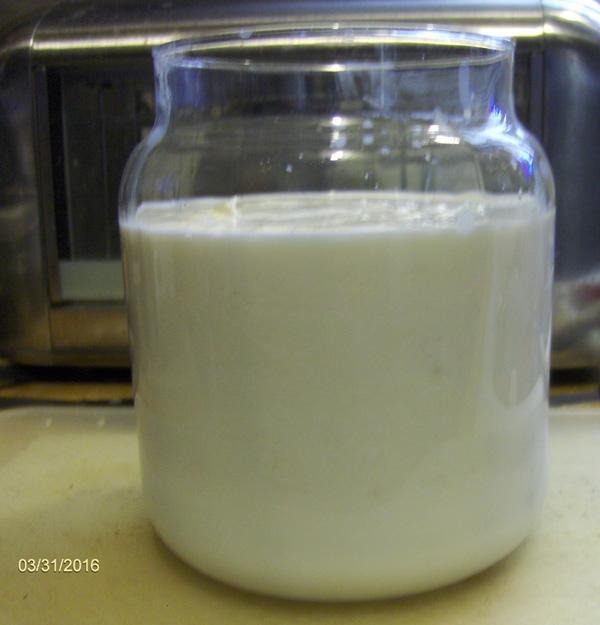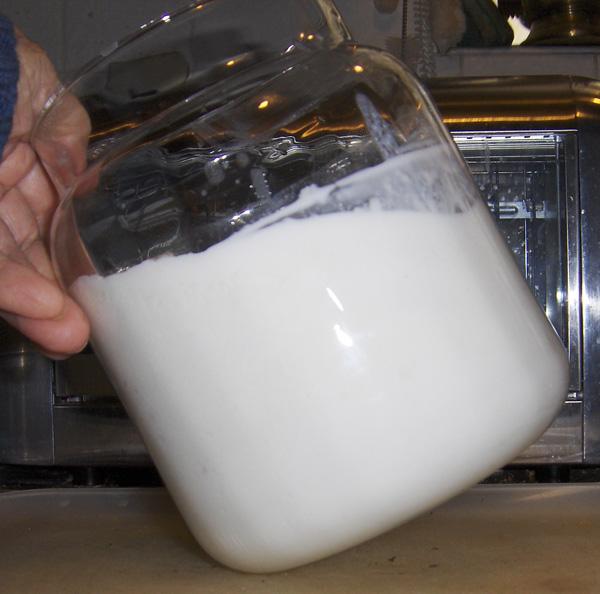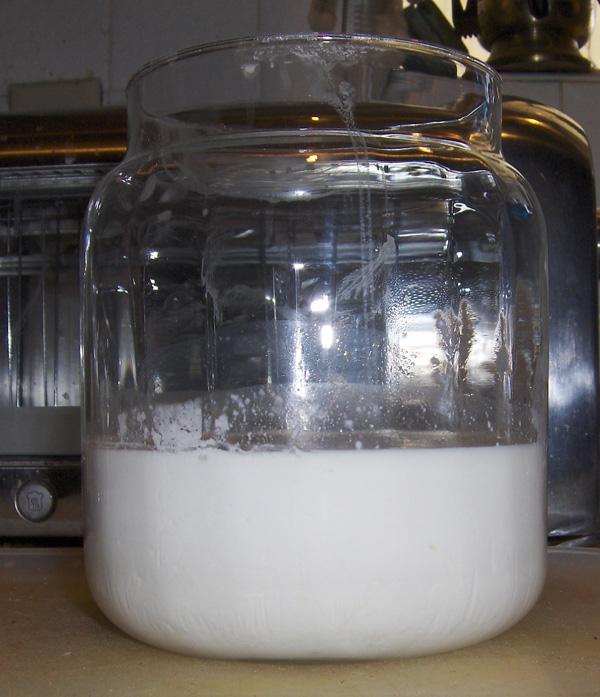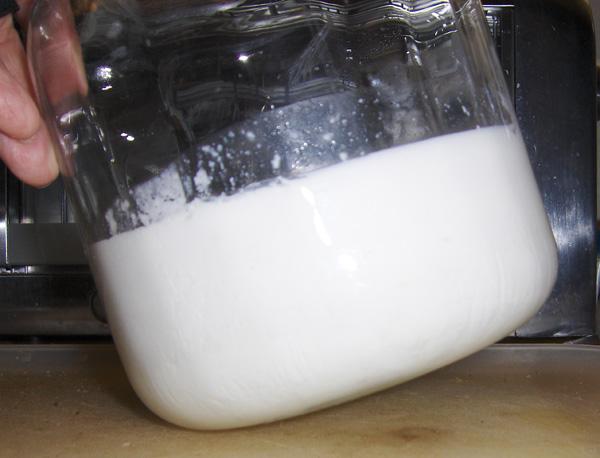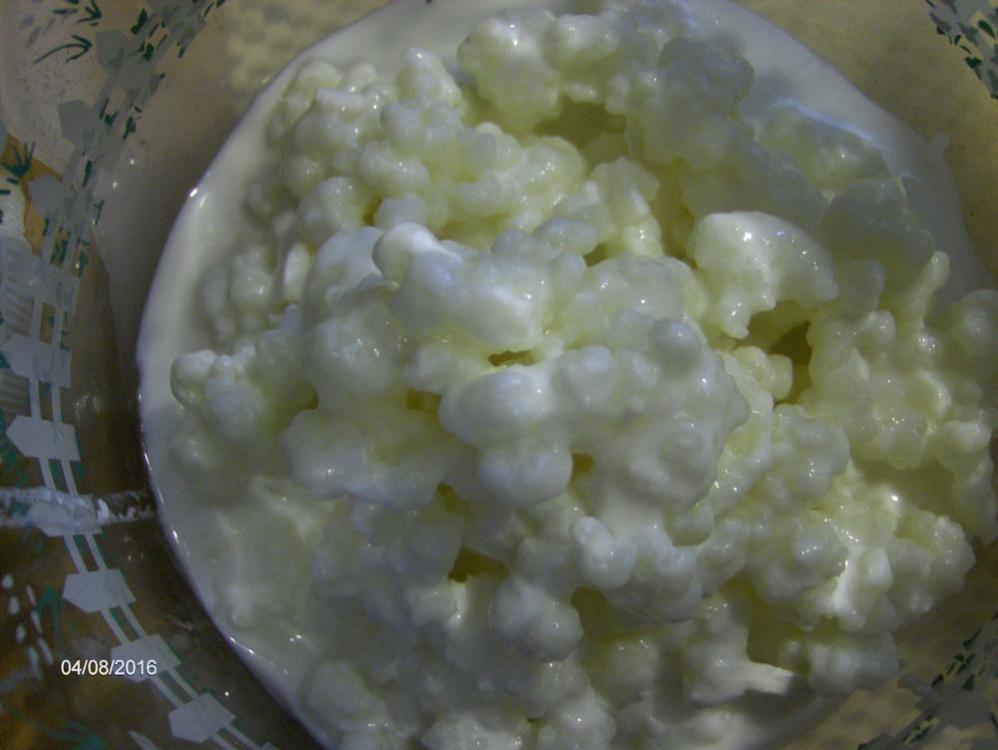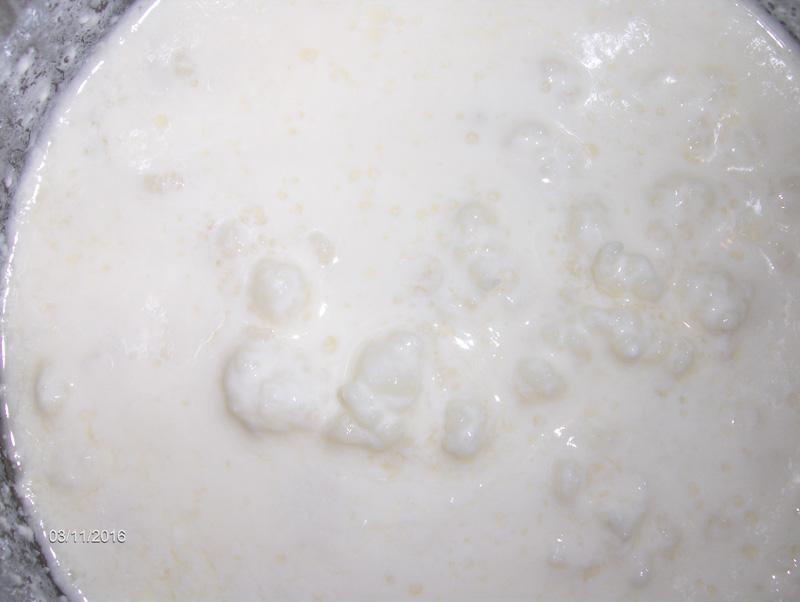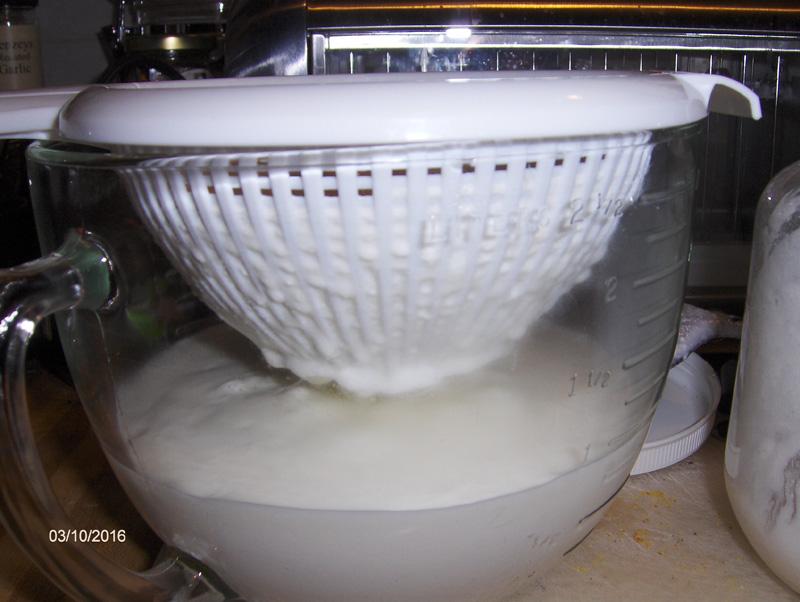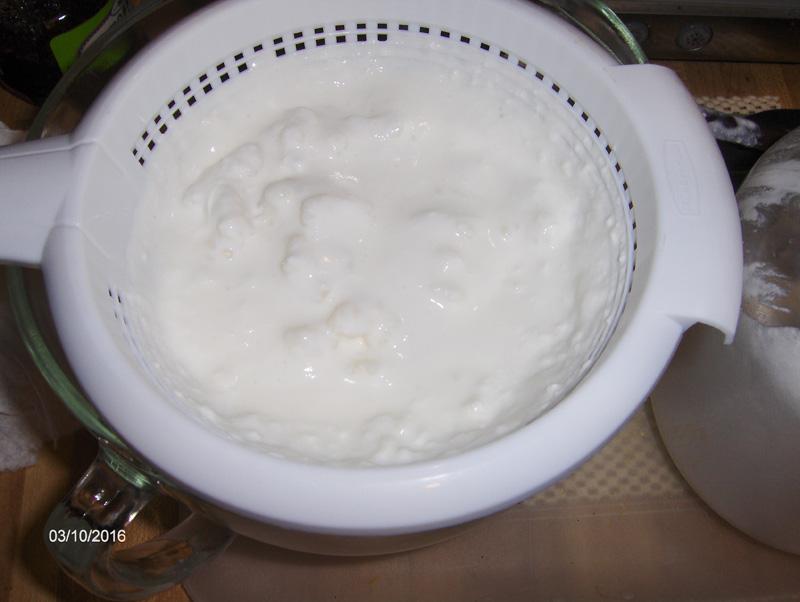-
Posts
11,034 -
Joined
-
Last visited
Content Type
Profiles
Forums
Store
Help Articles
Everything posted by andiesenji
-
There is watercress - grows in water. I have eaten the roots of cattails - in the spring, later on they get very bitter. And you have to be very CAREFUL where you harvest them in the wild. Some waters are polluted. And in some places the plants grow in and around water HEMLOCK, which is deadly poison. The roots will absorb these so only from water you know is clean. When I was a child in Kentucky we had a water garden where my grandmother grew water chestnuts, water spinach, cattails, and a kind of celery, bog pickleweed or pickerel weed. They were both ornamental for the flowers and all were edible.
-
They apparently had boneless picnics for $1.78 a pound but someone bought all they had and they won't get another shipment till next Tuesday and can't guarantee they will be at the same price. I phoned the Walmart over on the west side of Lancaster - same thing, they only have 7 of the bone-in picnics left, all the boneless are gone. Probably the guy who has the mobile barbecue rig. I saw it in the parking lot when I was there yesterday morning early. He does "events" like the air show and the motocross and things like that. Cooked it turned out beautifully, very moist, tender, not much grease, perfect pulled pork. I am going to make pork and sweet potato hash for dinner. It's one of the dishes I have found that is greatly improved with the addition of preserved lemon.
-
Let me preface this by stating I rarely shop at Walmart and I "never" buy meat there. This morning I had to go there to pick up something they carry that the other stores in my area do not. I had to walk past the MEAT CASE. Pork PICNIC SHOULDER - BONE-IN $1.24 per pound! This had a nice fat cap, carefully removed, will become chicharrons. I deboned it still had a LOT of meat there was not a lot of internal fat in fact I only removed the fat cap, none of the interstitial stuff. Will cook and freeze it in usable portions. I bought one - thinking about going back and getting another for the freezer because it has been a while since I have seen pork at a reasonable price. Total: $10.58 It is cooking now. Smells delicious. Folks with smokers - this would be a good time to stock up.
-
Egg shells and even whole eggs, plus a pinch of salt were used in boiled coffee, Norwegian or Swedish coffee or as many call it "Cowboy Coffee" boiled in a big graniteware coffee pot over a campfire (or nowadays a grill). I was introduced to it in 1956 when I went to Minneapolis to attend baking school (Dunwoodie) and lived with a Norwegian family. They made coffee that way. I'm sure coffee was made that way on my grandpa's farm but by the time I was a child in the '40s, there were more sophisticated and modern brewers. My grandpa loved gadgetry - no question where I got the trait.
-
You all can subscribe to Food Safety News. It's free and there is often interesting information not focused on recalls. F.S.N Home page
-
Funny you should mention this. A few days ago I was sorting through some of my old "tried and liked" recipes from the "net" and noticed this one, which was in my 2010 recipes folder, titled CHAMPION CHAMPORADO rice pud. and a note that I used cocoa (KA black + extra 3 TBS of turb.sug) in addition to 1/3 cup sugar in the ingredients - because I have a problem with regular chocolate but not cocoa. I also noted - used 1/2 cup heavy cream - no evap milk on hand...
-
"UPDATED: Frozen veggies recalled in U.S., Canada for listeria By News Desk | April 22, 2016 Fifteen frozen organic vegetable products distributed to retailers in at least 35 states and four Canadian provinces are under voluntary recall because of potential contamination with listeria monocytogenes. CRF Frozen Foods of Pasco, WA, posted the recall Friday because random samples of frozen organic peas and corn tested by Ohio health officials returned positive results for the foodborne pathogen." Here's the LINK to the complete article. I drove down to the senior center a bit ago to post this prominently on the bulletin board. A lot of seniors in this area of the Antelope Valley, have frozen foods delivered by Schwans home delivery.
-
I chop candied ginger very fine and add it to rice pudding along with saffron-infused milk.
-
I made my "breakfast" drink (smoothie I guess) with 1 1/2 cups of kefir, 3 tablespoons of blackberry syrup (Torani), a banana and a tablespoon of milled (ground) flaxseed. The estimate of calories is about 320 and it is very satisfying as a "meal" and hopefully will contribute to my losing a bit of weight. The last time I did the "kefir diet" using approximately this formula - occasionally adding a pasteurized raw egg to the mix - I lost 11 pounds in two weeks, having this for breakfast and lunch. And I did not get the mid-afternoon munchies, which seem to plague me with eating regular meals.
-
I only rinsed them to show what they look like "naked" so people will understand that the "gummy globules" are the good stuff. I have a nylon mesh filter - I use it for yogurt and kefir cheese - in the fridge for 24 hours. It's too fine for straining the kefir grains out quickly. I also have this one - it holds a bit more so I use it for larger batches.
-
I have frozen the grains in heavy cream for about a month. Last year I had intended to do that during the time I would have my surgery but I got to Orange county to stay with my friend in Yorba Linda (surgery was a Loma Linda Univ) and the cardiac surgeon forbade me to drive back up here - he said I was at the point that my aortic valve could fail at any moment and driving was too stressful. He scheduled me for surgery 5 days later so I never got to come home and take care of my stuff. I didn't even have any extra clothes as I was only planning on being away a day. A lot of stuff "died" including some of the less hardy plants in my garden. But I had an excellent result.
-
It tastes like the Bulgarian cultured buttermilk that appeared about 25 years ago at high-end markets, hung around for 5 or 6 years and then faded away. I loved it. I think I started culturing kefir about then after attending a "seminar" at Herbal Gardens in Rainbow, CA where there was a person demonstrating it. I kept that culture going for years. Started another culture in 2005 and it died last March when I was away having open heart surgery. So I got some new grains last September and started up again. I use it a lot in baking, instead of buttermilk.
-
It sounds like you were lucky and got real cinnamon and not the cassia, which is "supermarket" cinnamon, harsh and with none of the subtle complexities of real cinnamon. I've been using Frontier fair trade organic cinnamon for several years. It's highly rated as is their cacao, which I also use. I used to buy it from Vitacost but Amazon now carries it. It's from Ceylon and is true cinnamon. I tried some of the Vietnamese (Saigon) cinnamon and while it is strong, it lacks some of the complexity that I can taste - sometimes being a supertaster is a pain. My rice pudding techniques have shifted over the years. I'm using sweet rice and cooking it on the "quick" setting in my Zo rice cooker and then adding the milk (regular), sugar and spices and resetting the rice cooker to "porridge" and letting it go. The milk gets thick and half-way to the dulce de leche stage, which is the way I like it.
-
Several FaceBook friends asked me to publish my method of making kefir on my blog so I put together some information and photos. There has been only minimal interest expressed here on eG but I thought I would also put the info out here for those who find culturing yogurt "too involved, with all the heating and cooling of the milk to certain temps." None of that is necessary with kefir - regular milk right out of the fridge can be added to the "grains" and it is incubated at regular room temp, it just should be kept in a place away from sunlight. When and where kefir was first “discovered” is really unknown. What is known is that it has been made by nomads in central Asia for at least 2000 years. Travelers wrote about it, including Marco Polo as they encountered nomadic tribes while crossing the steppes on their way along the silk road and the spice routes to the east. The nutritional benefits are many, even more than yogurt, although that is an excellent dairy food, the combination of bacterial cultures and yeast cultures in kefir “grains” consume the sugars in milk which cause problems for those who are lactose intolerant. Allowing the culture to “work” for longer will reduce the lactose even more. The “probiotics” help to restore the desirable intestinal flora in the gut following illness and treatment with antibiotics, which often disrupt this system. It also helps with heartburn and “sour stomach” which plagues people with GERD. Did you know that Kefir is very good in cooking and baking? Did you know that you can use it instead of buttermilk in recipes – and that it gives a wonderful texture and flavor to quick breads and cakes. You can sweeten it for a refreshing drink and for a sauce for fruit and other salads. And you can strain it to make kefir “cheese” which works well in recipes that call for similar dairy foods. Kefir requires no special equipment, does not even require the milk to be heated or incubated at higher than room temperatures. All you need to start is to order some KEFIR GRAINS. This is what they will look like when you first get them. This is about three tablespoons full. This is what they look like after removing them from the kefir and rinsing them with cold water. Kefir “grains” are the “mother” cultures which will turn milk into kefir at normal room temperature, usually taking 24 hours. These are a combination of microorganisms that clump together by the action of polysaccharides. These include lactobacilli, leuconostocs, lactococci, yeasts and acetic acid producing bacteria. It looks rather like gelatinous curds, sort of like semi-transparent, whitish, gummi candies shaped like globules. Some people liken the appearance to small cauliflower pieces. The grains are chewy, rubbery and don’t have much flavor. This is what they look like after adding a cup or so of milk. They float at the surface. In this photo the kefir grains have been placed in a half-gallon jar and 1 1/2 cups of regular milk has been added. I put the jar WITH THE LID LOOSE in a pantry which remains about the same temp all year – around 75° F. The "working" culture should be kept in a dark place, away from sunlight. Some people recommend covering the jar with cloth to allow it to “breathe” but I found that a loose PLASTIC lid works just fine and many of the glass jars sold as canisters have one piece plastic lids that are dishwasher safe and work just fine and are easier to sterilize than cloth. NEVER LEAVE THE JAR WITH THE LID SCREWED ON TIGHT! The kefir culture produces some gas and if there is not sufficient room in the container, it can cause it to break. This photo also shows a break in the culture near the bottom of the jar, this is normal and is just a layer of liquid – whey – that has separated from the curd and it recombines as soon as the kefir is stirred. The process works fine with pasteurized milk, homogenized mild, ultra-pasteurized milk etc. If you want to use raw milk it MUST BE PASTEURIZED prior to culturing with the the kefir grains. The milk can be cultured for up to 48 hours but 24 hours is best, before adding more milk. If the ambient temps are above 95, it is best to keep the culture in a cool place and check it every 12 hours and if the kefir grains are prominent on the surface and it looks somewhat dry, add some more milk. DAY TWO. This is after 24 hours. As you can see, the culture has set and it appears to have expanded a bit as the kefir grains have swollen and multiplied. I add another cup of milk, no need to stir, and return the jar, with its lid LOOSE to the pantry. DAY THREE. Another 24 hours has passed and the culture has again set and it is time to add another cup OR MORE of milk. At this point the kefir grains have “grown” enough to culture a larger quantity of milk if you will be needing a greater volume soon. It should be set like this. If there is some separation near the bottom with some visible liquid, just stir the kefir and then add the new milk. DAY FIVE. I forgot to take photos on day four. The volume is now more than a quart. It is not quite set as firmly as previous days due to the volume. Slightly less than one cup of milk will be added today. DAY SIX. It is ready to be strained and the kefir grains transferred to a clean jar to begin the process all over again.I have stirred the kefir to liquify the firm culture and separate the grains to make it easier to drain. USE ONLY WHITE PLASTIC OR STAINLESS STEEL UTENSILS AND STRAINER. Other metals react with the acid in the kefir and impart unpleasant flavors. If you need to use cloth to strain it, make sure it is well rinsed with cold water prior to use. Wring it out but leave it damp to make straining easier. This is the finished kefir, ready to be stored in the fridge until needed. It can be combined with fruit syrups, added to smoothies, and even mixed with cereal, cold or hot, for a nutritious breakfast or snack. Any recipe that uses buttermilk or yogurt works with kefir. This is a 2.5 liter container so it will hold more than a single batch. I have two of these so usually have one full and one partially filled. I use a lot of kefir. Some people advise straining the kefir grains out and starting a new jar every 24 hours but I have found that this is unnecessary and too time consuming and it discourages many first-time, novice people. Using a larger container – in this case a two-quart glass jar – and just adding a cup of milk each day for FIVE days and then straining it on the SIXTH day, works well for most folks. And the result is a sufficient amount that can be transferred to a glass container to store in the fridge. And after 6 weeks of repeated culturing, we have a lot more kefir grains which can be divided into additional containers to make larger batches or stored in milk in the fridge, which slows down the activity but you still have to add some milk every three days or so, instead of daily. And you can share your “extra” kefir grains with others. Once you understand that the production of kefir is very simple and the savings when you make your own is significant, you will never go back to the store-bought stuff with the “preservatives” and “coloring agents” and “artificial flavors” that processors add to increase shelf life. There are numerous online sources of information about Kefir and places where you can order the grains if you do not have a health food store in your city that sells it. For further information, search the links below. Cultured Food Life has some excellent information. Authority Nutrition explains some health benefits of kefir. Health Food Lover has some recipes. Live Pure Health has more recipes. And has a page on making Kefir Cheese. And for an extensive HISTORICAL perspective and just about anything and everything you would like to learn about kefir, there is DOM'S KEFIR GRAINS AND KEFIR SITE with numerous links to other pages and information about OTHER types of cultures such as water (sugar) kefir, etc.
-
This brings back memories of the sorghum cooking on my grandpa's farm when I was a child growing up in western Kentucky. The excitement would begin when the "pans" were brought out of the shed and set up over the kerosene burners and the big chopper/press was backed into place at one end and the motor checked and the belts and pulleys cleaned and oiled. We kids were constantly warned off from getting near the moving parts but it was so captivating to watch the juice being turned from watery liquid to the thick molasses as it moved down the row of pans. The most danger was from the bees and hornets that were also drawn to the sweet stuff but we couldn't resist dipping a finger in for a taste before being swatted on the behind and running off cackling with glee. My grandpa would mix sorghum with butter in a "spread" we called "scumble" to spread on cornbread or biscuits. Grandpa also owned a grist mill so we never used store-bought cornmeal - it was a grow-your-own and grind-your-own and it had to be white corn - which I still prefer for cornbread. Yellow corn was "feed corn" although many of the small farmers in the area only grew yellow corn and brought the dried stuff to the mill to be ground, coarse for animal feed, fine for baking (and sometimes cooking - mash to make liquor). In the mid-40s it cost them 25 cents to have 50 pounds of corn ground. Other mills charged more but my grandpa kept prices low because he knew many of them couldn't afford more. He let them use the hand-cranked "shellers" for free.
-
Costco has always done it right. With food recalls, they are right on the ball, acting on customer complaints as soon as they are informed. And certainly their return "process" couldn't be easier. Last year my neighbors bought a yard play thing for their kids and had a lot of difficulty putting it together so they just bundled up the pieces - the box had been torn apart when they prepared to put it together - and they hauled it into the store and the person at the counter just gave them their money back, without any difficulty and had a man haul the bits and pieces away. Then the manager came out and APOLOGIZED for their experience of having bought a faulty item. I had a similar experience many years ago when I bought a Kitchenaid mixer, tried to knead bread that was too stiff a dough in it, and burnt out the motor. I took it back to Costco, they took it back and offered me another mixer or my money back. I took another mixer, burnt out the motor in that one a week later and took it back and was given my money back, no questions. I'm a LOYAL Costco customer.
-
I agree that you may be using too much leavening. My cornbread recipe, which is "southern" style, uses only baking soda and buttermilk for leavening. No baking powder. It rises and stays there, does not collapse much, if any. It's on my blog here. With photos. Whatever fat your use, make sure it is hot when added to the batter and add it right at the end, just before the hot pan goes back into the oven. I've been making cornbread this way for more than 50 years. It's not sweet, it's not cake and it is sturdy. The only YEASTED cornbread requires the use of wheat flour that contains gluten, otherwise there is no structure to hold onto the gas produced by the yeast. If you can't contain that gas in the structure of the bread, the action of the yeast is wasted. If you want a yeasted bread that contains cornmeal, look for a recipe for Anadama bread - King Arthur Flour has an excellent one. BUT, it is not cornbread per se. It is a New England thing. In the 1800s and the early part of the last century, people did prepare a fermented corn mash "bread" rather like hoe cakes, baked on a griddle, but as few people now "cook" corn mash, it fell out of favor - people who made it were often suspected of making moonshine. Cornmeal and hot water, mixed and left alone, will ferment in a couple of days and you can smell it from a distance.
-
A lot of people didn't take allergies serious thirty years ago but now more people are aware, since their have been some highly publicized deaths from allergic reactions. I've been allergic to alcohol since the early 1980s, it developed slowly over time - I was never much of a drinker but had a scare one evening when I took a sip of a margarita and my voice abruptly changed, hoarse and raspy. I thought it was the salt on the rim of the glass and wiped it away but with another sip I lost my voice entirely. At that time I carried an emergency shot kit, as the Epipen was not universally available and the expiration times were not as long as epinepherine in glass ampules. I saw my allergist the following Monday and he really didn't believe it was the alcohol but did some scratch tests on my back and said, yes, I was allergic to alcohol, pure grain alcohol so it wasn't a strain of yeast or other additive. From that time I have always been careful about desserts, many include raw liquor. I can cook with wine but it takes hours to reduce the percentage of alcohol in foods, much longer than most people realize. Now there are charts which detail the times required but twenty years ago, most chefs assumed flaming a dish would "drive off the alcohol." Regarding margarine, I never liked it and refused to eat it. To me it always tasted like it had kerosene in it. I'm a supertaster, have many more taste buds than normal so I taste flavors that many people can't sense. They say elderly people lose the sense of taste but I'm now 77 and I can still pick up faint flavors that others do not notice. And that includes alcohol. Not long ago I attended a party where the host was grilling hamburgers and dosing them with a "secret sauce" before serving. I asked if it contained liquor and he denied it but his wife said it did and gave me a spoon with just a dab on it. I could taste the bourbon and said so, then asked for a bare hamburger absolutely no sauce. He was a bit miffed but complied and I avoided an unpleasant incident. He really thought I was just being contrary but I showed him the MedicAlert bracelet I wear that states, Anaphylaxis to Alcohol.
-
It could also be used to crush and extract the "juice" from pressure-cooked poultry bones, which my grandpa's cook often did to make some of the potent broths with which she made her "famous" bread sauce. If you have never tasted bread sauce, it is a revelation. I guess it fell out of favor when everyone became so worried about calories, carbs and cholesterol, but I could make a meal off it, like a hearty very thick soup. As a child, I loved to turn the crank after the bones and whatever else was in the pot had been ladled into the press, hearing the crunch of the softened bones and watching the juices pour out of the spout and into the pot that had been placed on a stool below the edge of the table. One of the women always had to finish it because I wasn't strong enough to quite crush the last bit out. Thanks for posting about this, it has revived some delightful memories for me.
-
Nice! Brand sliced peaches and mixed fruit recalled because of glass pieces. Apparently sold only at Walgreens. Jarred Fruit recall.
-
- 2
-

-
Lard press is what we called it when I was a child (1940s). I had one for years but traded it to a friend who wanted it for display in his butcher shop - he owned an abattoir licensed to handle wild game and did butchering for hunters. Mine was made by Griswold but Enterprise was a big name.
-
I worry about substitutions of fish because I have a severe allergy to iodine - found in ocean fish and I can easily avoid obvious seafood. But I have been served "catfish" in a restaurant and within moments of taking a bite, I began to feel the tell-tale tingling that I recognized as being the start of a reaction. I used my Epipen and was okay but the manager's attitude was "fish is fish" and "you're okay, no problem." I tried to explain that for me and quite a few others, this is a life-threatening event, if I did not have the Epipen, swelling in my larynx could close my airway and kill me. He said he had never heard of anyone dying from eating fish, except the "weirdos who eat that Fugu stuff." We left the restaurant, with the manager insisting the others pay for their meals, even though they did not eat them, because "they got what they ordered." And threatened us with "legal action." My friend's husband handed him his business card and the guy shut up. At the time he was an attorney with the AGs office. I no longer order fish in restaurants and rarely buy it in supermarkets. Fortunately I have a friend who fishes, often in the California aqueduct and brings me fish that is guaranteed to be fresh water.
-
" Hepatitis outbreak linked to frozen organic fruit sold at Costco By Coral Beach | April 16, 2016 Canadian officials have linked an ongoing Hepatitis A outbreak to a frozen organic fruit blend of berries and cherries sold exclusively at Costco stores." This came in today's Food Safety News email bulleting.
-

Yard Sale, Thrift Store, Junk Heap Shopping (Part 2)
andiesenji replied to a topic in Kitchen Consumer
The thing with cheese knives is you need something to break the contact between the cheese and the blade above the cutting edge. Some have barley perceptible striations vertically in the blade. The Wusthoff blades are engraved in a cross-hatch pattern you can see in my photo. I really think your knife is a pizza cutter but if you want to use it for cheeses, I suggest you take a very fine grit flat Dremel wheel and made parallel vertical strokes on both sides of the blade beginning about 3/16 of an inch above the cutting edge which will give you the same effect as a "granton" blade.


